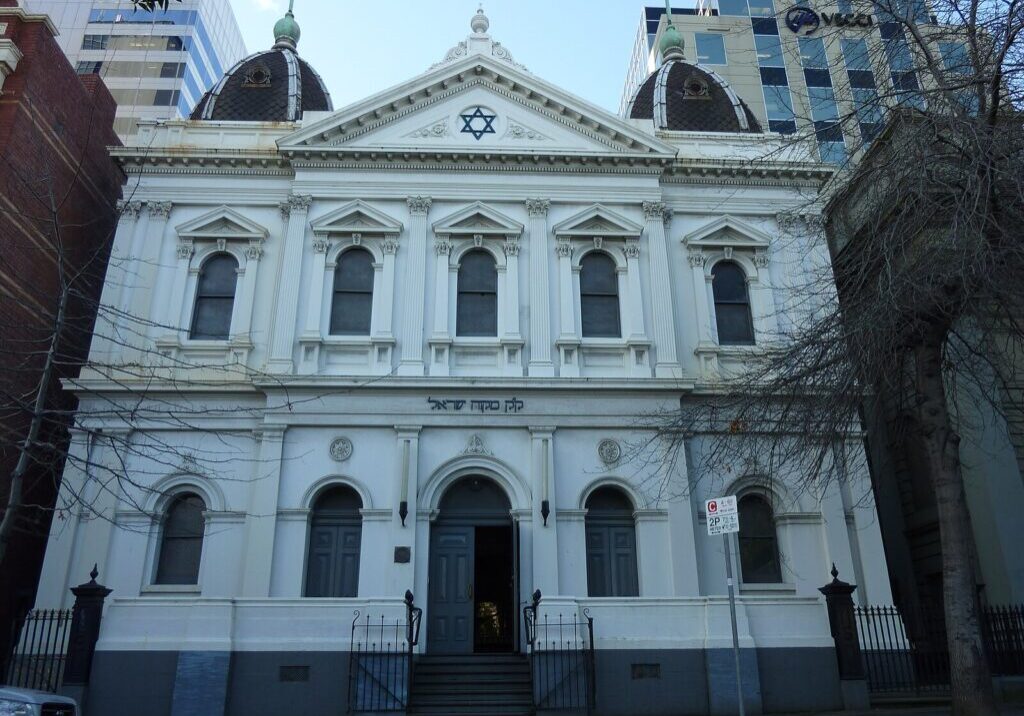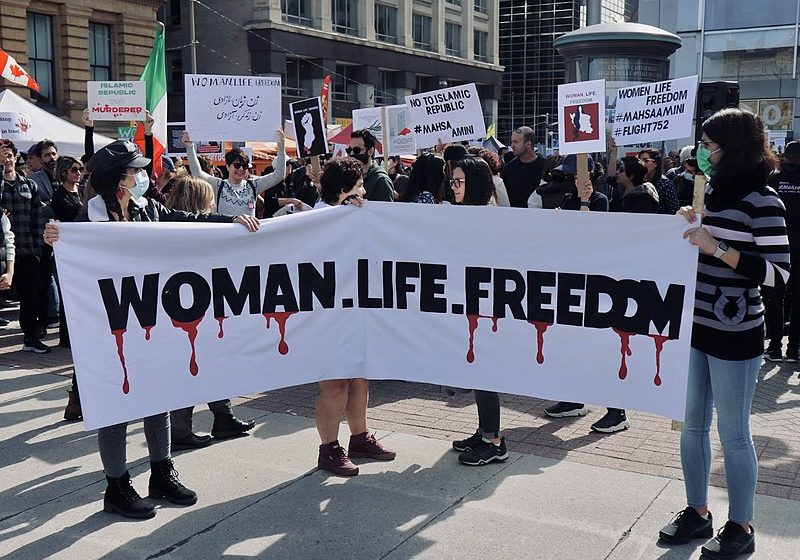Australia/Israel Review
Behind the News – December 2023
Nov 23, 2023 | AIJAC staff

ROCKET AND TERROR REPORT
Since the Hamas pogrom of October 7, more than 9,500 rockets and other projectiles had been launched at Israel from Gaza as of Nov. 17, though the daily number of launches declined sharply by mid-November.
Israel’s official death toll from the attack was revised down to approximately 1,200, after it was realised some suspected casualties were actually Hamas terrorists. As of Nov. 17, 237 people were reportedly being held hostage in Gaza, with four people released; one female soldier rescued by the IDF on Oct. 29; and three hostages confirmed to have been killed.
As of Nov. 20, the IDF had struck more than 15,000 targets in Gaza and suffered 66 deaths since the start of its ground operation.
In the West Bank, one soldier was killed and five wounded in a terrorist shooting at a checkpoint south of Jerusalem on Nov. 16. On Nov. 10, the Palestinian Authority claimed 182 Palestinians had been killed and 2,700 wounded in Israeli military operations since October 7. Most of these were terrorist operatives and those involved in clashes with the IDF. However, Israeli settler violence has reportedly been responsible for nine Palestinian civilian deaths.
ISRAEL AGREES TO HUMANITARIAN PAUSES
On Nov. 9, Israel announced it would initiate daily four-hour humanitarian pauses in its anti-terror operation in Gaza. The “tactical, localised” pauses support the already established humanitarian corridors allowing Gazans to evacuate from northern to southern Gaza and away from the most intense areas of conflict. The pauses occur in a different northern Gaza neighbourhood each day, with residents notified three hours ahead of time. Residents can either choose to leave or restock food and medical supplies.
Meanwhile, more than 1,400 trucks carrying more than 20,000 tons of humanitarian aid entered Gaza from Egypt between the start of the war and Nov. 18. On that date, Israel said it would allow in as many aid trucks as the UN could provide.
ISRAEL ALLOWS FUEL INTO GAZA
On Nov. 16, Israel agreed to allow the entry of 140,000 litres fuel into the Gaza Strip every two days for use by humanitarian agencies to power water, sewage and sanitation systems, after previously embargoing all such fuel imports. The following day, 120,000 litres arrived for these purposes, as well as an additional 10,000 litres for generators keeping the local telecommunications systems running.
Israel and the US have alleged that Hamas has been hoarding a stockpile of up to one million litres of fuel, which it uses to keep generators operating for its underground tunnel network. Israel has also provided audio intercepts appearing to show Hamas fighters attempting to steal fuel from Gaza hospitals.
HAMAS AIMS EXPOSED
Evidence found on the bodies of Hamas terrorists killed during the October 7 massacre, and reported in the Washington Post (Nov. 13), exposed additional details about the aims of the operation. The invaders were instructed to kill and kidnap as many Israelis as possible and then attempt to occupy Israeli towns for weeks. The terrorists carried sufficient equipment, weapons and food to carry this plan out. Maps and intelligence suggest their aim was then to launch a second wave penetrating much deeper into Israel, potentially strike larger Israeli cities, and then possibly link up with the West Bank.
Senior Hamas officials have also added information about the goals of the attack in statements to the New York Times – principally to create a major war with Israel to reignite Arab and global interest in the Palestinian cause. In a report printed on Nov. 9, Hamas leader Khalil al-Hayya told the New York Times that the October 7 massacre “succeeded in putting the Palestinian issue back on the table,” warning that “now no one in the region is experiencing calm.” Taher El-Nounou, a Hamas media adviser, expressed his hope that a “state of war with Israel will become permanent on all the borders, and that the Arab world will stand with us.”
VIOLENCE ON ISRAEL’S LEBANON BORDER
In Lebanon, Hezbollah had lost more than 70 operatives to Israeli retaliatory strikes and shelling between October 7 and Nov. 17, while engaged in nearly 200 attacks against Israeli soldiers and civilians on the Lebanese border. Hamas has also lost several members in Lebanon. At least one member of the Shi’ite Amal militia was killed. Rockets and anti-tank missiles continued to be fired daily at Israel. Two Israeli civilians and six soldiers have been killed in the violence.
On Nov. 3, Hezbollah leader Hassan Nasrallah gave a keenly anticipated speech in which he praised the Hamas attacks, but said he had not been informed of them beforehand, and would not be sacrificing Lebanon for Gaza.
HOUTHIS CONTINUE ATTACKS ON ISRAEL
The Houthis, Iran’s proxy in Yemen, have launched several ballistic and cruise missile and drone attacks against Israel since Oct. 19. This necessitated the first operational use of Israel’s Arrow 3 ballistic missile interceptor on Nov. 9, which shot down a Houthi ballistic missile in what is believed to be the first combat operation to take place in space. The US and Jordan also intercepted Houthi missiles fired at Israel.
On Nov. 15, the Houthis threatened to strike any Israeli ships traversing the Red Sea and Bab al-Mandab Strait. On Nov. 20, the Bahamas-flagged cargo ship Galaxy Leader, which has an Israeli businessman as one of its owners, was seized by Houthi forces.
US CLASHES WITH IRAN’S PROXIES IN IRAQ AND SYRIA
Following attacks by Iranian proxies against United States military bases and personnel in Syria and Iraq that began on Oct. 17, the US responded with airstrikes against Iranian proxies on Oct. 26, Nov. 8, and Nov. 12. There were at least 52 attacks by Iranian proxies on US forces up to Nov. 10, including 26 in Iraq and 26 in Syria, with 56 US personnel injured, and one contractor dying of cardiac arrest.
US strikes against Iranian proxy sites included two F-15 fighter jets dropping multiple bombs on a weapons storage facility in Deir el-Zour in eastern Syria known to be used by Iran’s Revolutionary Guard Corps, killing nine people affiliated with Iran-backed proxy groups.
HEZBOLLAH ATTACK IN BRAZIL THWARTED
Israeli Prime Minister Binyamin Netanyahu revealed on Nov. 8 that Mossad, Israel’s spy agency, along with Brazilian security services, had foiled an attack against Jews in Brazil planned by Hezbollah. Two individuals were arrested on terrorism charges in Sao Paulo, with search and seizure warrants executed in multiple states.
NO STEPS AGAINST ISRAEL FROM ISLAMIC SUMMIT
An emergency Arab League and Organisation of Islamic Cooperation summit on the Israeli-Hamas war on Nov. 11 in Riyadh concluded with a statement calling for an immediate ceasefire, and condemning Israel’s “crimes”.
However, states with relations with Israel, most notably Saudi Arabia, the UAE, Egypt, Morocco and Jordan, blocked Iranian and Turkish efforts to impose aggressive punitive measures against Israel, such as cutting all relations, preventing transfer of weapons to Israel from US bases in the region, and using petroleum to pressure the West to take anti-Israeli steps.
Analysts pointed to this development as evidence of the strength of Israel’s ties with its regional allies, specifically the Abraham Accords countries, and also indicating that Saudi Arabia is still seeking a deal to normalise relations with Israel.
Stranger than Fiction
Looking out for the “Little People”
Since the Hamas October 7 mass atrocity, “Kidnapped” posters have been appearing across the world. They have a photo and the name and age of one of the more than 230 victims of the Hamas kidnapping spree, some details of the overall attacks, and a plea to “Please help bring them home alive.” Disturbingly, a parallel movement has emerged to tear down or vandalise these posters.
A normal, sane person might think people put up these posters simply to seek to draw attention to the plight of the kidnap victims and put pressure on the international community to act to have them released.
However, leading US-based activist Linda Sarsour knows better. Sarsour is probably best known as a leader of the Women’s March on Washington in 2017, until leaving the organisation over allegations she failed to prevent antisemitism and homophobia associated with it. She is also a BDS supporter.

US-based activist Linda Sarsour (Screenshot)
According to Sarsour, the posters are actually a cunning trap by those dastardly Jews. They don’t really care about the hostages, but only put them up because they want them torn down to make Palestinian supporters look bad.
Video footage of a pro-Palestinian rally on Nov. 7 shows her telling the crowd, “There are provocateurs all across the city. And what they’re waiting for you to do is to waste your energy ripping down their little posters so they can record you and try to get you fired from your job… They have their little people all around the city. Trust me, I know them. I got a radar for them. You think they’re your people? You think they’re ordinary people? Trust me when I tell you they are everywhere.”
Who says antisemitism makes you paranoid?






